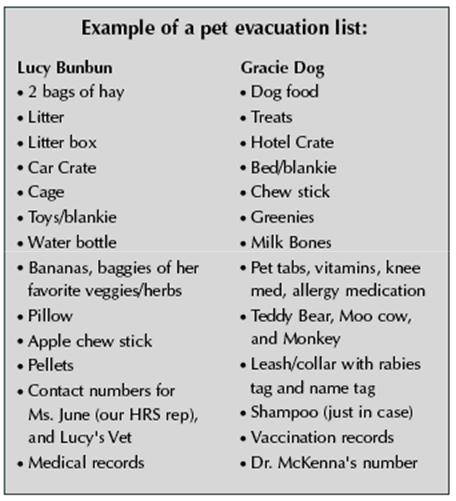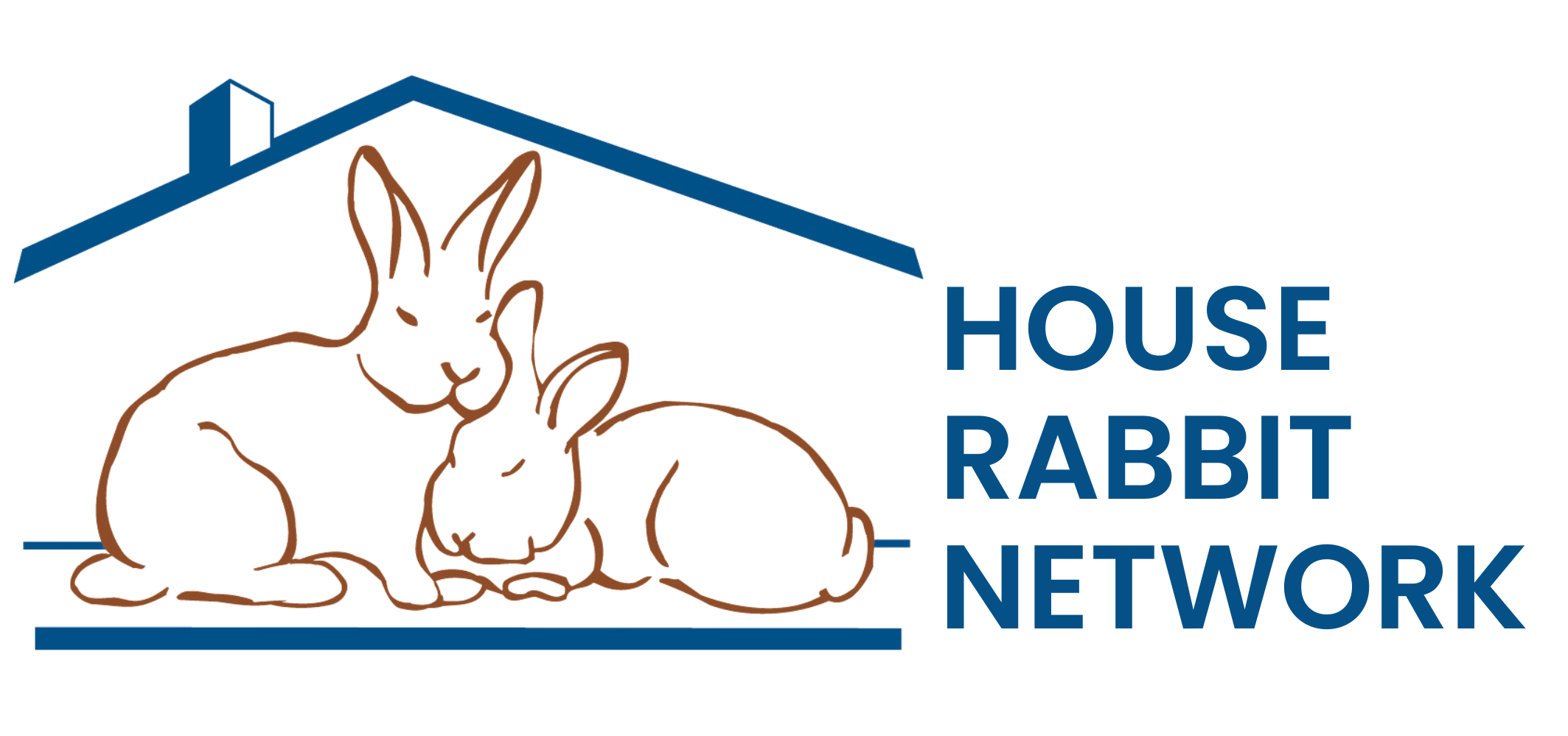Evacuation Planning With Bunny
Evacuating can be a traumatizing event for anyone, but this is especially true for our furry babies who don’t understand what events are transpiring and why they’re being whisked away from the comfort of their little worlds. The most important thing you can do to ensure the comfort of both you and your pets is to PLAN AHEAD! Hurricane Katrina taught me to pack for at least a week or two. Do not assume you will be able to return home right after the storm.
As a New Orleanian, I have evacuated more times than I care to remember. Once we enter hurricane season, I always make sure that I’m fully stocked with all of my staples (gallons of water, canned goods, batteries, toilet tissue) and that I have at least one extra bag of dog food and two extra bags of hay. Once people realize a disaster is a real possibility, stores get extremely crowded, streets become packed, and people run around frenetically trying to stock up. The shelves are often bare early on, so it is important to stay ahead by at least a week on your pet staples (hay, litter, dog food, etc). Whether you choose to hunker down or to evacuate, you will need pet food, litter, and other such necessities. Throughout hurricane season, remember to circulate the bags so that the food won’t go bad. (When you buy a new bag, use one of the “hurricane” bags).
Each year, I sit down BEFORE hurricane season even starts, and make a list of every item I need to bring for my dog, bunny, and turtles. Think of the average week – what do you use? What medications have been prescribed for your pet? Often, the stress of an evacuation causes underlying conditions to arise or animals to become symptomatic.
If you’re going to a hotel: Once a hurricane watch is issued, I start trying to book a hotel room. For a Gulf Coast evacuation, this is the norm, so rooms fill up extremely quickly. The most important thing you can do is to TELL the hotel you have pets. Don’t try to hide them or sneak them in – you do NOT want to be thrown out with no place to go (and with all of the hotels completely booked up). Let them know you have pets and ask about their pet fees. If they don’t usually accept pets, ask whether they will make an allowance for the hurricane.
If you plan to go to a parish or county evacuation shelter: You must make other plans for your pet. Most of these shelters will not allow animals. Although some are starting to partner with rescue groups or the ASPCA to help people board animals at the shelter, many people are put in the tragic situation of losing contact with their pets once they arrive at a shelter. Find out ahead of time if the shelter accepts pets and consider other options. Shelters are terrible places to evacuate to, but even more so if you have furry babies.
If you’re going to a friend’s or family member’s house: Make sure they know you have pets. You don’t want to cause them discomfort (for example, if they have an allergy) . You also need to make sure that there will be a separate place to keep your pets, away from their pets and small children. This is especially true for small animals, like bunnies. Your bunny will already be alert and upset that she is away from her safe haven. She may be more likely to bite or scratch a stranger or a small child. You don’t want your friend/family member’s child hurt, nor do you want your bunny harassed.
When packing your pets’ items, make sure they are easily and readily accessible. Pack a bag for each pet, then pack a car bag for all of your pets. Your bunny will need hay and water throughout the trip so you don’t want to have to dig through her toys or her bedding to access them. Your dog, if she isn’t confined to a crate during the trip, will want access to chew toys, a bed or pillow, and her leash (during rest stops). By packing a car bag, you will save yourself the time of having to dig through unnecessary items.
Situate your bunny’s crate. First, make sure the crate isn’t too big. We like our pets to be comfortable and usually assume that bigger is better. This is not the case for car rides when too much space can lead to being sloshed about in the crate (and can injure your bunny or baby). Place some newspaper at the bottom, with a nice comfy blankie or towel so they can curl up around it, a small pile of hay (for your bunny, who may not eat it but should still have access to it) and water bottles (which are best for travel since crocks tip over).
When loading the car, remember to put the items your pet will need during her trip in an easily accessible place. If your bunny or pet has to take medicine at a certain time, write a note and stick it to the dashboard so you remember to pull over and keep her on schedule.
Place your bunny in a secure position: the cage should not face front to back, but rather side-to-side. The momentum from slamming on your breaks will cause your bunny to fly forward. If the cage is turned to the side, the bunny won’t fly as far and the impact is lessened. Be sure to keep your pet and your children separate if you think your children will stick their little fingers into the cage or annoy the animal. You don’t want any bites on the road. Remember, your bunny or pet is out of her natural safe zone. She’s afraid and more agitated.
While you’re driving, make sure your music isn’t extremely loud (your bunny and other pets’ ears are sensitive), and try not to make harsh turns or break suddenly. Do not, for any reason other than a medical emergency, open your bunny’s crate while the car doors are open. Do not, under any circumstances, open your car doors without having your dog on her leash. Their instinct may be to bolt and losing them on the road is a tragedy you can prevent if you take a few precautions. Also remind your children never to let the bunny out during the car ride. If you slam on your breaks and the bunny is thrown around the car, she can be extremely injured.
Once you get to your hotel, set up your bunny’s regular x-pen or cage. Try to make it as much like home as possible. Don’t let your furry baby have free run around the hotel room for ANY reason. You do not want to take the chance of her getting into something (like electrical cords) or getting out of the room. It’s just not worth it. Your bunny is not like a dog; she is a prey animal who is easily traumatized. Her explorations right now are not the same as those at home. Entertain her with some pellets, hay, her pillow that smells like home, and any normalcy you can provide. Pet her, love her, reassure her, but do NOT let her roam freely.
Make sure you find out (either ahead of time or at the front desk) the names of local vets and pet supply stores.
Keep in mind that the hotel may also experience some parts of the storm and may lose electricity. Keep frozen water bottles handy for all of your pets to lie on should this happen. They can overheat quickly.
Evacuating with pets can be stressful. However, you should NEVER consider leaving them at home while you and your family evacuate. After all, they are family too!

by Lauren White
